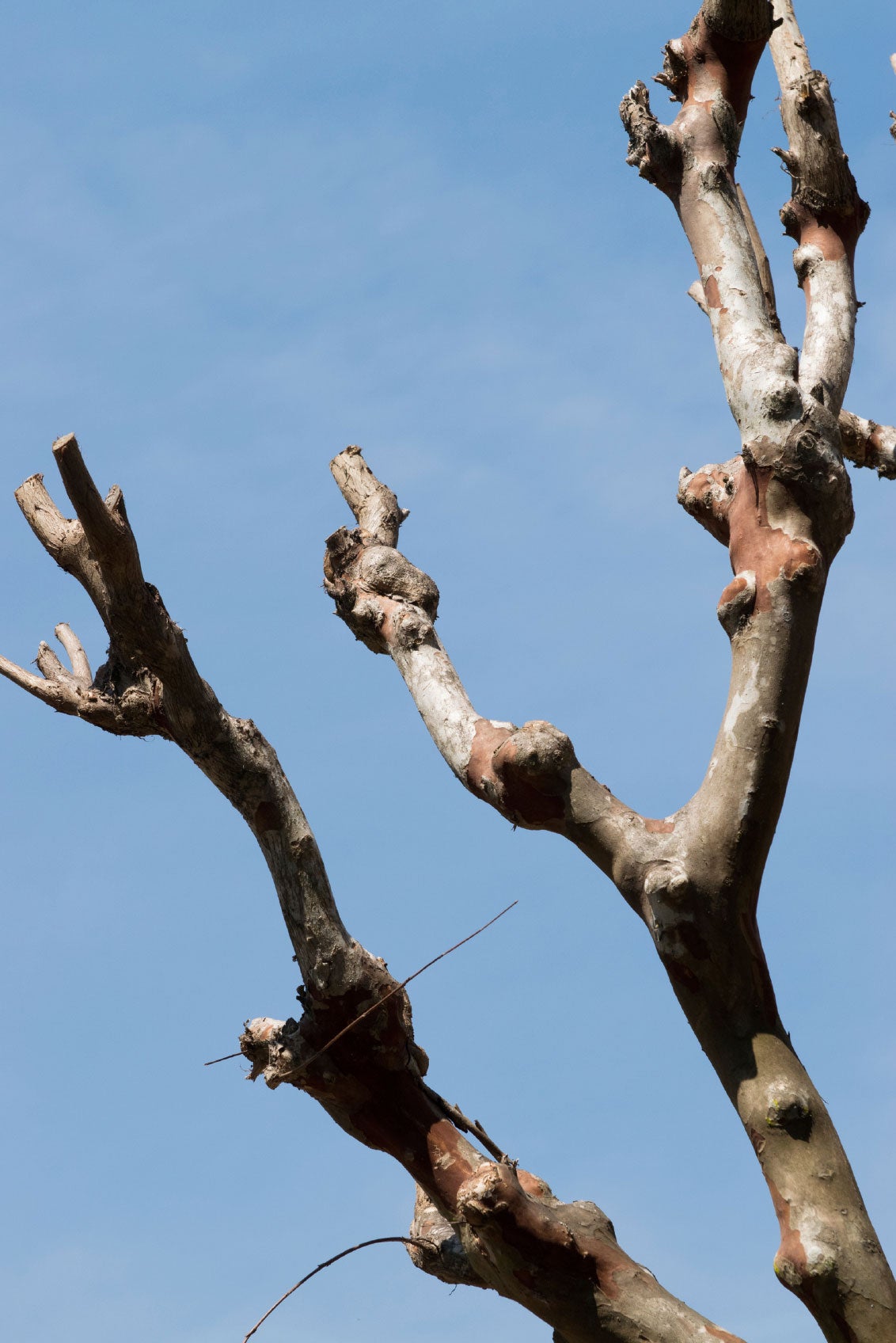Knots On Crepe Myrtle: How To Fix Crepe Myrtle Knots


Have you noticed unsightly knots on your crepe myrtles? Knots on crepe myrtle trees are usually the result of improper pruning. This article explains how to prevent knots and what to do about them when they appear. Cutting crepe myrtle knots doesn't resolve the problem. If you cut below the knot, a new knot forms in its place. The tree never reverts to its naturally beautiful shape, but through proper pruning of a crepe myrtle tree, you may be able to make the knots less noticeable.
Why Knots Form on Crepe Myrtle Trees
Pollarding is a European style of pruning where all of the new growth is cut from the tree each winter. The result is that knots form at the end of the pollarded branches, and in the spring, numerous stems grow from each knot. Pollarding originated as a method of renewing firewood, and later became a method of keeping flowering trees from outgrowing their space. Inexperienced pruners sometimes find that they have pollarded their crepe myrtles in a misguided attempt to stimulate the tree to produce more flowers. In truth, this method of pruning reduces the number and size of the flower clusters, destroying the natural shape of the tree. Crepe myrtle knot trimming doesn't help it recover.
How to Fix Crepe Myrtle Knots
If you have only one or two knots, you can remove the entire branch at the point where it attaches to the trunk or a main side branch. This type of pruning won't result in a knot. When severe pruning produces knots throughout the tree, you may be able to make them less noticeable by careful pruning. First, remove most of the sprouts that arise from each knot in spring, and allow just one or two of the larger ones to grow. Over time, the sprouts will grow into branches, and the knot will be less noticeable, although they never go away. Before you prune a crepe myrtle, make sure you have a good reason for each cut you make. Cuts to remove awkward branches or those that rub against each other are fine but remove the entire branch without leaving a stub. You don't have to remove the faded flower clusters at the ends of the branches to keep the tree flowering. Lingering seed pods won't affect next year's flowers.
Sign up for the Gardening Know How newsletter today and receive a free copy of our e-book "How to Grow Delicious Tomatoes".

Jackie Carroll has written over 500 articles for Gardening Know How on a wide range of topics.